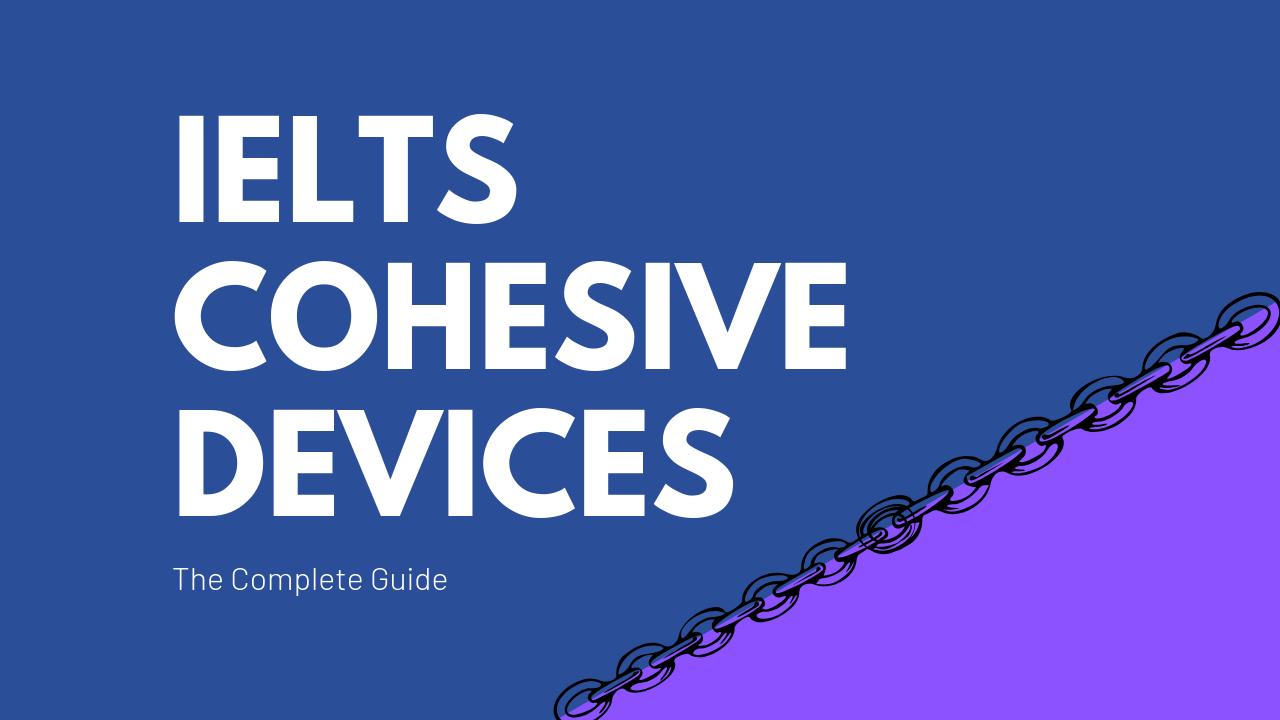Since you are here, you probably know that Coherence and Cohesion are one of the criteria you are judged on, in IELTS Speaking and Writing. This criterion checks how well you can link ideas and sentences.
Here are some details on what Coherence and Cohesion looks for, in different bands:

What are Cohesive Devices?
Cohesive devices are those words, punctuations and sentence structures, which link your ideas in writing. Cohesive devices ensure that your essay has a flow and is readable.
Following are few cohesive devices that make your writing shine!
- Logical Sequencing.
Whenever you are listing something, use words like “firstly, secondly,” etc.
- Sufficient use of linking words/discourse markers.
Linking words like “therefore”, “nevertheless”, “however”, if used sparingly, can create a beautiful readable piece.
- Knowledge of Paragraphing.
Random paragraphing not only makes your essay look disorganised but also indicates lack of proper ideation. Therefore, it is necessary to paragraph your essays well.
- Appropriate use of Punctuations.
Different punctuations have different uses. It is always a good idea to know what punctuation does what and use them appropriately in your writing. Semicolons, for example, are great discourse markers.
What a cohesive writing should look like?
Take a look at this paragraph:
Plenty of people think veganism is a myth. People all over the world consume animal protein. The most popular food chains are non-vegan. Many cultures around the world promote veganism. Many people opt for a vegan diet for health issues. Some opt for pure personal choice.
Now read this:
Plenty of people think veganism is a myth. The major food chains in the world are non-vegan and they are thriving. While a good number of people in the world consume animal protein, plenty of people prefer to have a vegan diet. This could be due to cultural issues; health issues or due to pure personal choice.
Between these two paragraphs, you can see that the first one is full of short and choppy sentences without cohesive device. It doesn’t give you a comfortable read nor does it appear organised.
The second sentence, on the other hand, provides a smooth read and has cohesive devices like, “while”, conjunctions like “and” and punctuations like semi colons. It also looks more organised and has a flow.
As you know an essay usually has three distinct parts: Introduction, Main Body and Conclusion. A cohesive writing will have clear paragraphs, with the introduction having a good opening; the main body, with the main idea, reasoning and supporting examples, facts and figures and finally end with a well-rounded concluding paragraph.
Let us take a topic and see how it can be cohesively organised:
Some believe using social media is risky, while others believe it is a great platform for socialising. What is your take on it?
For this topic the main idea of the essay is: social media can’t be trusted blindly. The reasoning that will follow would be:
- There is always a risk of people using fake profiles.
- The information/ photos you put online aren’t safe.
- Social media profiles can be hacked.
You can follow this up with a conclusion that should contain: a brief sum up of your opinion.
How to Improve Your Writings using Cohesive Devices?
If you think your writings lack cohesion, here’s a way to add them:
- Note down all your ideas about a given essay topic.
- List them down in a sequence.
- Rephrase them in a way that all the sentences are either part of the main idea or they are connected to the preceding sentence.
- Remember cohesive devices are not just linking words, they are reflected in your sentence construction and also in the kind of punctuations you use.
The following image shows how you can improve your band by correctly using cohesive devices:

Recommended Reading
Coherence and Cohesion in IELTS for Writing Task 2
How to Organize the Essay Well in IELTS Writing Task 2?
IELTS Model Answer of Band 7
Conclusion
The aim of your writing is to express your views, ideas in a structured manner. Cohesive devices allow you to achieve the flow which is necessary for a good readability.








